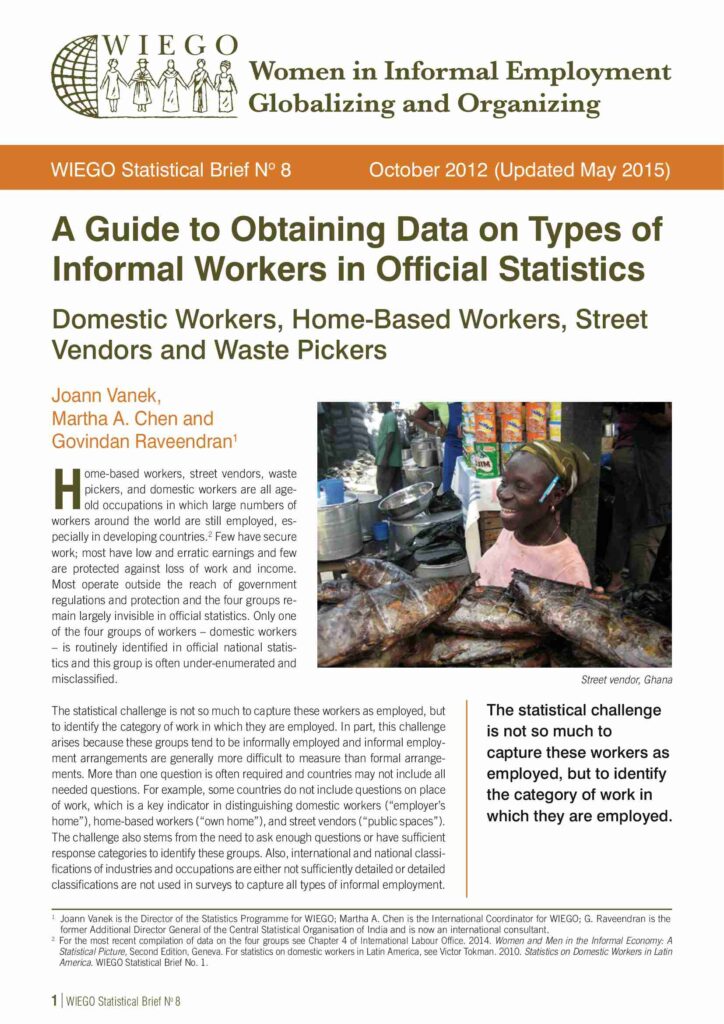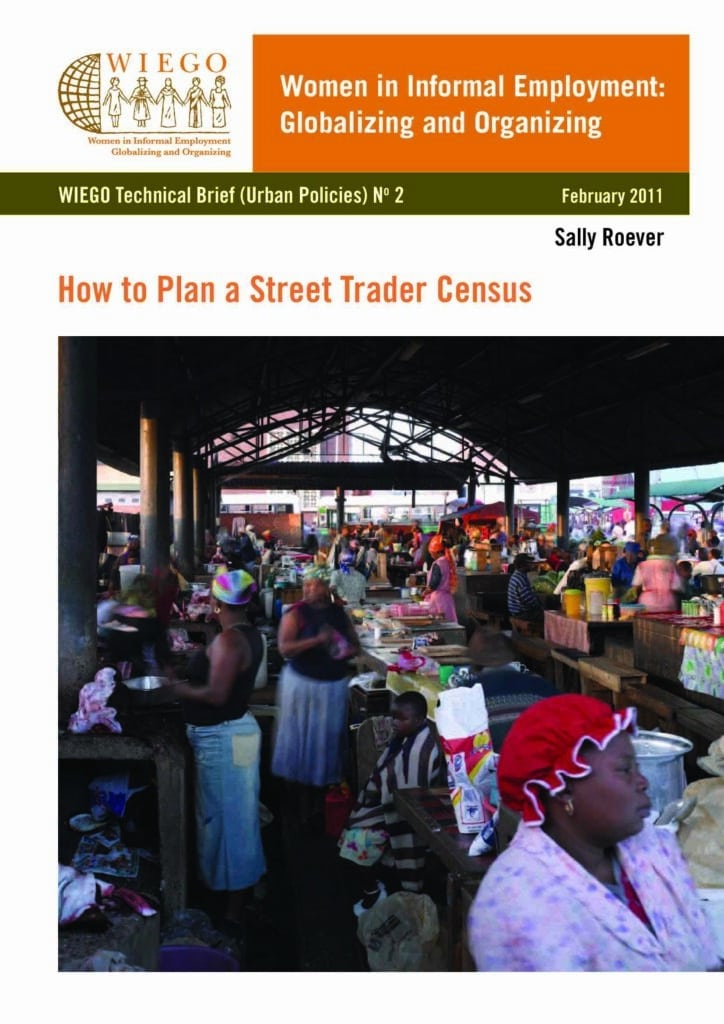Finding reliable data on the size of the street vending and market trader population in any given city or country can be challenging.
Why Street Vendors and Market Traders May be Absent from Official Statistics
- There is no “place of work” question in population censuses and labour force surveys;
- The “place of work” question lacks appropriate response categories to allow data analysts to identify street traders.
- Where there is a “place of work” question with appropriate response categories, the results are not tabulated or disseminated; and
- There are detailed occupational categories for street traders and market traders in the international standard classification of occupations (ISCO-88) but they are not tabulated or published in the official statistics of countries.
Why Street Vendors May be Undercounted
Even where official statistics capture street vendors and market traders, they are likely to undercount the total number of these workers in any given city.
- Street vendors and market traders may report their “place of work” to be home rather than the street, or may not report any place of work at all;
- Many workers use street vending or market trade as a secondary, seasonal, temporary or part-time occupation, so do not report it as a job; and
- Some market traders and most street vendors feel uncomfortable reporting their true occupation in government surveys because of the risks they face working in public space. For example, a street vendor may report working as a “micro-entrepreneur” when responding to an official government survey. Reasons for this include the fear of sanctions if reporting street vending as an occupation, such as fees, confiscation of merchandise, or even jail time. Also, there is a social bias in some countries against informal occupations.
Other Challenges
Even where official statistics provide the most reliable national count of street traders, they cannot always be disaggregated in ways that are useful to urban planners and street vending organizations. Often one can distinguish between urban areas and rural areas, or metro areas and non-metro areas, but not among individual cities (outside the capital) or within areas of individual cities. In some countries, it is possible to disaggregate national labour force surveys to the level of individual cities, but only for the largest city or cities.
The WIEGO Statistics Programme has worked for many years to improve the measurement and publication of street vendors and market traders in official statistics. One key development to improve the measurement of these worker groups is the new priority given by the 20th and 21st session of the International Conference of Labour Statisticians to a place-of-work question in household surveys. Data on the two worker groups in different countries are published in the WIEGO Statistical Brief series as well as compiled together in Statistical Brief No. 40, Street Vendors and Market Traders in 12 Countries: A Statistical Profile.
In many cities, the only available data on street vendors come from unofficial, often ad-hoc, estimates. A 2012 publication of StreetNet International provides disaggregated analysis of known street vendors in the eThekwini Municipality (Durban, South Africa) by type of area and within areas, with sufficient observations by demographic and vendor characteristics.


